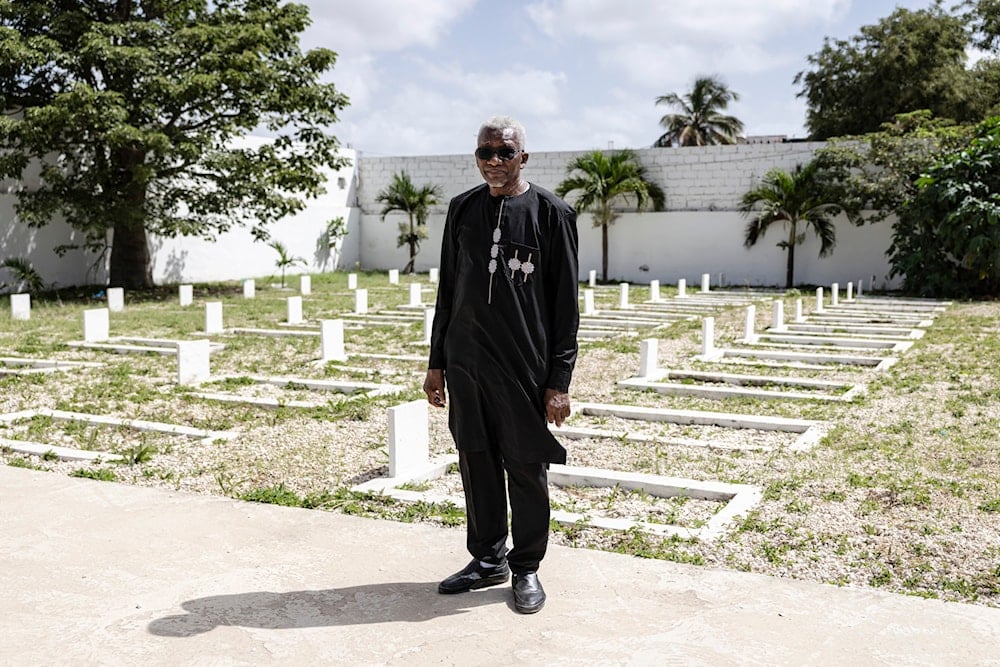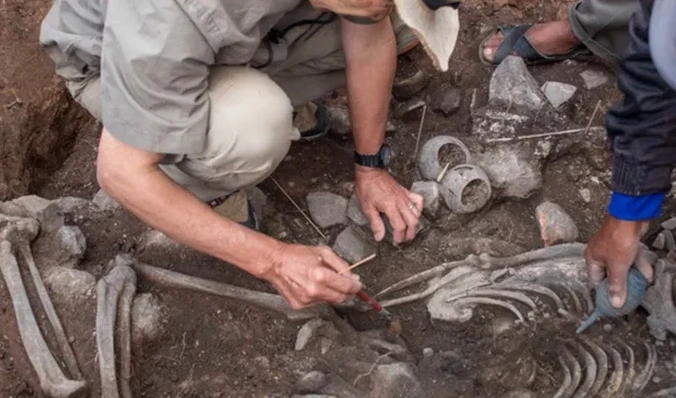Senegal probes French colonial massacre with fresh excavations
Archaeological excavations in Senegal's Thiaroye cemetery are uncovering new evidence of a French colonial massacre during World War II, hidden for decades.
-

Mamadou Kone, technical advisor to the Director of Archives and Historical Heritage of the Armed Forces, poses for a portrait at the Thiaroye Military Cemetery in Dakar, on October 23, 2025. (Photo by Patrick Meinhardt/AFP)
Archaeologists in Senegal have uncovered new evidence of a French colonial massacre dating back to 1944, as part of a government-led effort to uncover the truth behind the killings of West African soldiers by French forces following World War II.
The Thiaroye military cemetery, located near the capital Dakar, is currently the focus of an extensive archaeological excavation aimed at identifying the remains of soldiers allegedly executed by French colonial troops on December 1, 1944.
The incident occurred after nearly 1,600 soldiers, many of them recently freed from German captivity, were brought to a holding camp in Thiaroye and began protesting unpaid wages and unequal treatment.
French troops opened fire on the men, but the number of casualties and the precise circumstances have long been disputed. Official colonial-era accounts claimed 70 deaths, but Senegalese researchers say the number could be between 300 and 400.
Read more: Tebboune: French colonialism's massacres ingrained in Algerian memory
Mass grave evidence emerges
During a recent visit to the cemetery, an AFP team observed disrupted earth, exposed burial containers, and ongoing digs around headstones. The cemetery, created in 1926 by colonial France, holds 202 marked graves, although it remains unclear who is buried in each plot, or whether some markers contain any remains at all.
Archaeologists have excavated seven graves from an initial group of 34, recovering full and partial skeletons. According to archaeologist Moustapha Sall, one of the skeletons was found with a bullet lodged near the heart. Others showed signs of trauma, including missing spines, ribs, and skulls. Some remains were discovered with iron chains around their legs.
“This means they suffered violence,” Sall said. “One hypothesis is that the graves were made after the initial burials, or that it was staged to make it appear they had been properly buried.”
Historical record challenged
Colonel Saliou Ngom, director of Senegal’s army archives and historical heritage, said the work aims to compensate for the historical gaps left by limited access to French colonial archives.
“Making the underground speak is our way of accessing truth,” Ngom said. He added that the October 16 report submitted to President Bassirou Diomaye Faye described the massacre as “premeditated” and “covered up.”
Read more: French army exits Senegal, as president advances post-colonial reforms
President Faye has since authorized the continuation of excavations at all sites suspected to contain mass graves. He has also reaffirmed Senegal’s commitment to preserving the memory of those killed.
Researchers plan to carry out DNA analysis to identify the origins of the remains, and ballistics experts will examine the materials recovered to establish the type of weapons used. Ground-penetrating radar is also being employed to explore deeper layers of the cemetery’s subsoil.
“The preliminary results do not answer all the questions,” Sall noted. “But they are a very important step in the search for historical truth.”
France acknowledges massacre
In November 2024, as the 80th anniversary of the massacre approached, French President Emmanuel Macron publicly acknowledged for the first time that French colonial troops had carried out a “massacre” in Thiaroye.
While the statement marked a significant shift in France’s official stance, Senegalese officials and historians say much more work remains to be done to fully document the scale of the atrocity and ensure proper recognition for those killed.
“We have been searching for the historical truth for 81 years,” Colonel Ngom said. “If the subsoil provides it, there is nothing more significant.”
Read more: France grapples with rising calls for independence from colonies

 4 Min Read
4 Min Read










